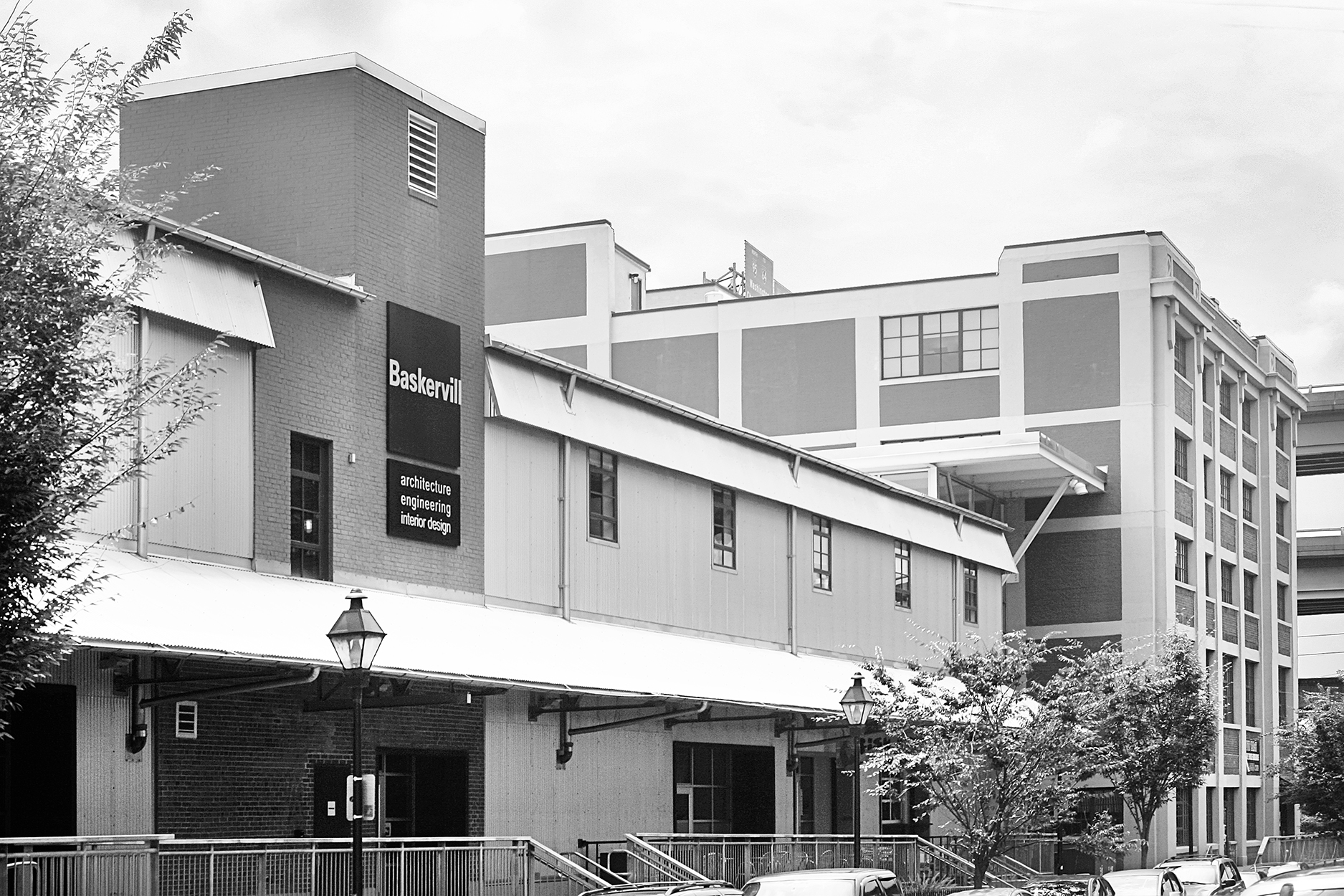On a sunny May day two years ago, a group of Baskervill leaders and rising stars quietly stepped away from their day-to-day to sit in a small room (full of snacks, of course) and talk about the future. And not just “the future” in general terms – a future exactly three years away: in 2020. Obvious nods to perfecting our “vision” aside, 2020 wasn’t just some arbitrary date; it was a deadline. You see, in 2020 the firm’s longstanding lease on its Richmond space at 101 S. 15th Street is up. Home to the firm’s largest office since 2003, the sprawling former warehouse in the city’s Shockoe Bottom neighborhood had served us well for nearly two decades. But this opportunity for a fresh start gave us the chance to rethink it all … so we did.
And, spoiler alert, everything changed.
There’s no denying that over the past 15 years, work has changed … dramatically. A quick Googling of “workspace” or “workplace design” will show hit after hit of position papers, editorials, data-based projections, and behavioral analyses on the modern office and how it impacts recruitment, retention, efficiency, engagement, and overall financial performance. Which is nothing to say about the ever-changing influence of technology on literally everything we do. Regardless of the industry, the challenges, and opportunities, in our work environments are universal. It’s a lot to think about.
After 15+ years in our current space we found ourselves dealing with all the same challenges we see, hear, and feel from our clients. So, we did exactly what we’d do with a client on a new project: start at the beginning, outlining the priorities for our team without a predetermined notion of where that would lead.

If workplace strategists and behavioral scientists can agree on one thing, it’s this: workspace design is not one-size-fits-all. It’s a mantra we share with our clients day-in and day-out, and consistently reinforced in our own office. We all agreed: access to a variety of spaces is critical to supporting our teams.
“Choice and flexibility are buzzwords in workspace design for good reason,” says lead interior designer Matthew Marsili. “Successful workspaces acknowledge not only the variety of work happening – for us, hands-on design, client meetings, accounting, strategy, and much more – as well as the ways it’s happening: in-person meetings, video conferencing, virtual-reality, or individual, task-based work.”
Options for deep work, small and large groups, pin-up, and casual seating need to seamlessly interact with our individual workstations, collaboration and celebration spaces, and functional spaces (think: printers, coffee makers, restrooms, and wellness areas). Mobility and versatility in these spaces are vital, which means always-on technology integration and lighting considerations for every nook and cranny. Team members need the option to plug-and-play wherever suits their needs, whether it’s for heads-down work, informal meetings, or just a change-of-scenery to escape from their normal spot.
For our team, Access also means connection to each other and to space(s) beyond our four walls. With nearly 140 staffers in our Richmond office working collaboratively, we knew we’d ideally have the majority, if not all, of our operations on a single floorplate (as we do on 15th Street). The nature of our work, and work today in general, means it’s exceptionally rare for everyone to be in the office at the same time; flexibility in the floorplan, furniture, and overall layout are necessary for long-term viability and success. Proximity to green space and the outdoors, restaurants and coffee shops, transportation and parking options, and a link to the larger urban fabric outside our doors was crucial, which meant our move would need to support and reinforce our office as part of our city.

90% of employers say they want a workspace that both attracts and engages employees*, and we’re no different. In an uber-competitive hiring environment, space can be a powerful differentiator; a representation of your company’s brand, culture, and values. When a potential new hire or client walks through our doors, what do they see? Hear? Experience? Do our team members feel ownership and investment in our environment? Does our space echo the stories we tell, the impressions we make, and the ways we do business? We want our office to reflect the firm’s storied 120+ year legacy, our growing practice, passion for our craft, and the energy and camaraderie that make up day-to-day life at our firm.
The discussions around the table that day weren’t limited to how things looked, we were also hyper-focused on how the space felt. Was our current space too warm or too cold … or both? Was the way the natural light entered the space more of a hindrance than an asset? Was the hum of the HVAC a great white noise machine, or a distraction? For our people to be at the top of their game, they needed thermal comfort, acoustical quality, and the wellness-boosting benefits of the sun. As a multi-disciplinary practice, we’re sensitive to spaces that have great form and function, and we expect our spaces to perform on every level. Our list of priorities was growing.

At the end of that day, we were committed to a list of “must-haves” that would guide future decision-making. But what next? And how did we make the leap from where we are to where we’re going? (Have you heard? We’re headed to Richmond’s James Center in just one short year!)
With the countdown to our big move on, we’re digging into how we got from that sunny day in May to the floorplans and design decisions taking shape today. By treating ourselves like a client (likely — as designers designing for other designers — the toughest client we’ll ever have), we’ll get up close and personal with our own process, and we’ll share the lessons we’ve learned along the way.
*Steelcase 360


